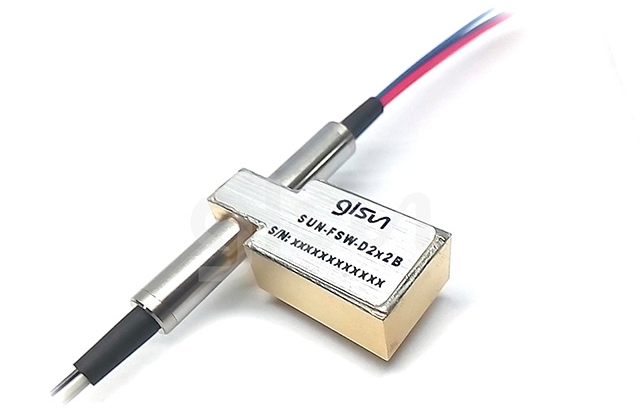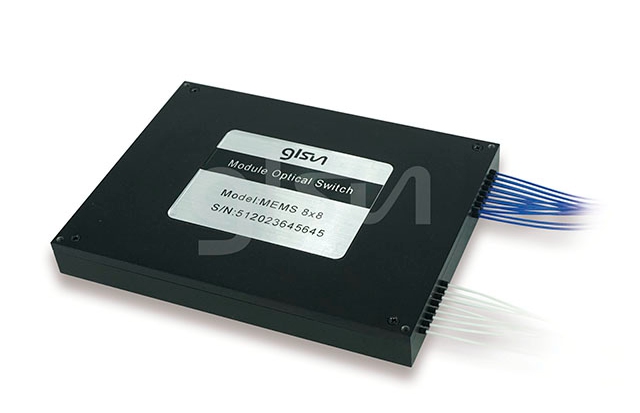All-Optical Switches: MEMS vs Mechanical Switches in Fiber Optical Network
by Glsun Mall Fiber Optic Components ManufacturerIn the optical fiber communication system, the Optical Switch (OS) is mainly used to realize the physical switching of optical signals or other logical operations in the optical path, and is mostly used in the optical cross-connect (OXC) technology as a key device for switching the optical path.
Types of Optical Switches
According to the number of input and output ports of the optical switch, it can be divided into 1x1, 1x2, 1xN , 2x2, 2xN, MxN, etc. Thus optical switch has one or more transmission windows for different uses in different occasions.
Classified from the manufacturing process, optical switches can be divided into mechanical optical switches, thermo-optical switches, acousto-optical switches, electro-optical switches, magneto-optical switches, liquid crystal optical switches and MEMS optical switches, etc. Among them, mechanical optical switches and MEMS optical switches are two widely used optical switches.
The mechanical/optomechanical switch may be regarded as the oldest type of optical switches. The working principle of the mechanical optical switch is to redirect the optical signal by physically moving the optical fiber with the aid of a mechanical device. By moving the prism or the directional coupler, the light at the input end is directed to the required output port. There are three main types of mechanical optical switches: one is to use prism to switch the optical path technology, the other is to use mirror switching technology, and the third is to switch the optical path by moving optical fibers.

The MEMS optical switch is based on a micro-electro-mechanical system, which uses an optical micro-mirror or an optical micro-mirror array to change the propagation direction of the beam to realize the switching of the optical path. The principle of the MEMS optical switch is very simple. When the light is exchanged, the angle of the MEMS micromirror is moved or changed by the drive of electrostatic force or magnetism, and the input light is switched to the different output terminals of the optical switch to realize the switching and on-off of the optical path.
The basic form of MEMS optical switch is 2X2, which has two optical fibers at the input and output ends, to complete two connection states, parallel connection and cross connection. Four optical waveguides are arranged in four directions, and a vertical MEMS micromirror is arranged at an angle of 45°. When the micromirror does not intervene in the optical path, the light beams from waveguides 1 and 2 are coupled into the waveguides 3 and 4, respectively, and the port connection states are 1→3 and 2→4, which is a through state; when the micromirror is inserted into the optical path, it comes from the waveguide The light beams of 1 and 2 are reflected by the micromirror and coupled to ports 4 and 3, respectively, and the port connection states are 1→4 and 2→3, which is the cross state.

Comparison Between Mechanical Switches and MEMS Switches
In general, mechanical optical switches collimate beam optics from each input and output fiber and move these collimated beams around inside the device. Therefore, they allows the distance between the input and output fiber without rious effects and achieves the lower optical loss. they can achieve excellent reliability, low insertion loss, and less crosstalk. However, they are relatively slow with switching times in the 10-100 m range due to their working principle.
With the rapid development of optical communication, optical switches are more and more extensive used in optical interconnection and optical exchange switching - the two more and more important optical network nodes. MEMS optical switches have the advantages of compactness, fast switching speed, and easy expansion. Meanwhile, they have the same advantages such low insertion loss, low crosstalk, low polarization sensitivity, high extinction ratio and high switching speed of waveguide switches, small size, and easy expansion as mechanical optical switches. The use of MEMS switches will be the mainstream in the development of high-capacity optical network exchange switching.
Sponsor Ads
Created on Mar 30th 2022 01:14. Viewed 280 times.



